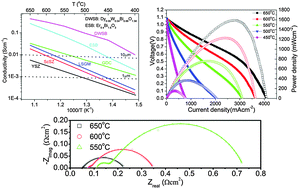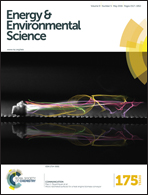A perspective on low-temperature solid oxide fuel cells
Abstract
This article provides a perspective on solid oxide fuel cells operating at low temperature, defined here to be the range from ∼400 °C to 650 °C. These low-temperature solid oxide fuel cells (LT-SOFCs) have seen considerable research and development and are widely viewed as the “next generation” technology, following the 650–850 °C SOFCs that are currently undergoing commercialization. LT-SOFCs have potential advantages for conventional SOFC applications such as stationary power generation, and may be viable for new portable and transportation power applications, along with electrolytic fuel production and energy storage. The characteristics of electrolyte and electrode materials are reviewed, with a focus on materials that have demonstrated good properties and cell performance at low temperature. Only oxygen-ion-conducting electrolytes are considered here. Anode materials are discussed, primarily the various Ni–cermet anode compositions that yield good low-temperature performance. Mixed ionically and electronically conducting cathode materials are described in detail, reflecting the extensive research activity that has aimed at providing useful oxygen reduction kinetics at low operating temperature. Cell design, materials compatibility, processing methods, and resulting microstructures are discussed, along with their role in determining cell performance. Results from state of the art LT-SOFCs are presented, and future prospects are discussed.


 Please wait while we load your content...
Please wait while we load your content...